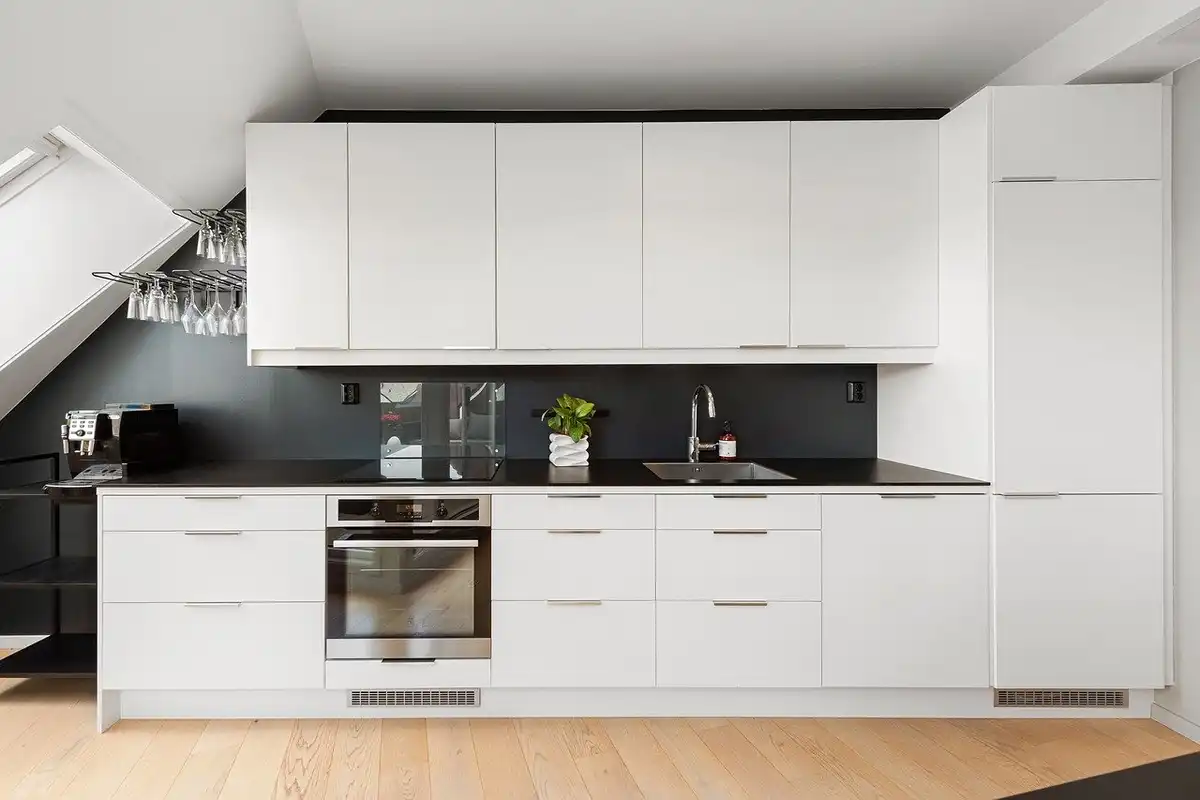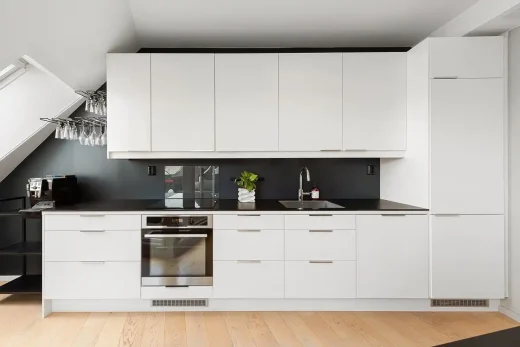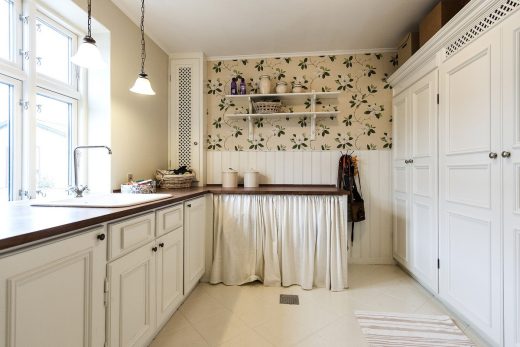Ergonomics in kitchen fitted cabinets design, Home fixtures, Property interior style
Ergonomics in Kitchen Design: Optimizing Your Fitted Cabinets
3 January 2025
The kitchen is often referred to as the heart of the home. However, it can rapidly end up a source of disappointment in case ineffectively outlined. A well-thought-out kitchen prioritizes ergonomics, centering on client consolation, productivity, and security. Central to typically the plan and situation of fitted cabinets. This article investigates how ergonomics can be consistently coordinated into kitchen plans to make a space that works for you.
What Is Ergonomics in Kitchen Design?
Ergonomics in the kitchen plan centers on making the space viable and proficient. It considers the physical developments included in cooking and cleaning and points to diminish pointless strain.
For illustration, ergonomic kitchens guarantee that regularly utilized things are put away inside simple reach. They moreover minimize monotonous bowing, extending, or cumbersome developments, making cooking a more pleasant encounter.
Why Fitted Cabinets Are Essential for Ergonomics
Fitted cabinets are the spine of a well-organized kitchen. Not at all like pre-made or secluded choices, fitted cabinets are customized to meet particular needs, guaranteeing ideal usefulness.
Personalization for Maximum Efficiency
Each household is one of a kind. Fitted cabinets permit homeowners to plan storage spaces custom-made to their way of life, cooking habits, and tallness.
Optimized Use of Space
From corner cabinets to pull-out racks, fitted cabinets maximize accessible space. They kill clutter and make it less demanding to find basics.
Brands like OPPEIN are famous for advertising high-quality, ergonomic cabinet plans that improve the usefulness of any kitchen.
Key Principles of Ergonomic Fitted Cabinets
To ensure your fitted cabinets contribute to an ergonomic kitchen, consider these design principles:
Appropriate Heights
Cabinets and countertops should align with the user’s height. Taller individuals may prefer higher countertops, while shorter users benefit from lower storage.
Accessible Storage
Items used daily should be stored at arm’s level, while rarely used tools can be placed in upper cabinets. This reduces strain and makes the kitchen more user-friendly.
Smooth Movements
Drawers with soft-close mechanisms and pull-out trays make accessing items effortless. These features prevent unnecessary strain and improve the overall experience.
Work Zones and Cabinet Layouts
A kitchen’s efficiency often depends on its layout. The placement of fitted cabinets should complement the kitchen’s work zones.
- The Work Triangle
The work triangle connects the sink, stove, and refrigerator—the three most-used areas in a kitchen. Cabinets near these zones should store related items, like pots, pans, and utensils near the stove. - Dedicated Zones for Specific Tasks
Divide your kitchen into zones for preparation, cooking, and cleaning. Assign fitted cabinets to each zone for task-specific storage. For example, cleaning supplies can be stored under the sink, while spices and cutting boards are kept near the preparation area.
Material and Finish Selection
The material and finishes of your cabinets impact their durability and ease of use. Ergonomic design also considers these factors to reduce maintenance and enhance practicality.
- Easy-to-Clean Surfaces
Opt for materials like laminate or engineered wood, which are easy to wipe down. These reduce cleaning efforts and keep your kitchen hygienic. - Matte Finishes for Reduced Glare
Matte finishes on cabinet surfaces prevent harsh reflections, making the kitchen more visually comfortable. OPPEIN offers a range of such finishes, combining style with functionality.
The Role of Lighting in Cabinet Ergonomics
Lighting is a crucial yet often overlooked aspect of kitchen ergonomics. Well-lit cabinets enhance visibility, reducing the time spent searching for items.
- Under-Cabinet Lighting
LED strips installed under wall-mounted cabinets illuminate countertops, making food preparation safer and more efficient. - Interior Cabinet Lighting
Motion-sensor lights inside cabinets make it easier to locate items stored in the back.
Smart Storage Solutions for Modern Kitchens
Advancements in technology have brought innovative storage solutions to kitchens. Integrating smart features into your fitted cabinets can significantly improve functionality.
- Pull-Out Drawers
Deep pull-out drawers are ideal for storing heavy cookware. They eliminate the need to bend and rummage through traditional cabinets. - Hidden Compartments
Secret storage spaces for small appliances or less-used items help maintain a clutter-free kitchen.
OPPEIN specializes in incorporating such smart features into their cabinet designs, ensuring that every inch of space is utilized effectively.
Addressing Ergonomic Challenges in Small Kitchens
Small kitchens often pose unique challenges, but ergonomic principles can still be applied effectively.
- Use Vertical Space
Tall cabinets that reach the ceiling provide additional storage without taking up floor space. A step stool can be used to access higher areas. - Corner Cabinets
Lazy Susans or pull-out corner units make it easy to access items stored in hard-to-reach areas. - Multifunctional Cabinets
Consider cabinets that double as seating or have built-in cutting boards to maximize functionality in compact spaces.
Testing and Fine-Tuning Your Cabinet Design
After your fitted cabinets are installed, take the time to evaluate their functionality. Are frequently used items easy to reach? Do you find yourself moving smoothly between tasks?
Make adjustments as needed. Shelves can be repositioned, and items can be reorganized for better workflow.
A Leader in Ergonomic Cabinetry
When it comes to ergonomic kitchen design, OPPEIN is a trusted name. The brand offers a range of customizable fitted cabinets tailored to individual needs. Their innovative features, like soft-close drawers and smart storage solutions, enhance usability and ensure a seamless cooking experience.
Safety First: Preventing Injuries with Ergonomic Cabinets
Ergonomics in kitchen design isn’t just about comfort; it’s also about safety. Poorly placed cabinets or awkward storage solutions can lead to accidents and injuries.
- Avoiding Overhead Hazards
Overhead cabinets should be installed at a safe height to prevent users from bumping their heads or struggling to reach items. A step stool can make higher cabinets safer and more accessible. - Soft-Close Mechanisms for Protection
Cabinets equipped with soft-close mechanisms prevent doors and drawers from slamming shut, reducing the risk of pinched fingers. This feature is especially beneficial in homes with children.
Last Words
Ergonomic kitchen design is about more than aesthetics; it’s almost making a space that creates life less demanding. Fitted cabinets, when astutely planned, play a crucial part in accomplishing this objective.
By prioritizing client consolation, optimizing storage, and consolidating cutting edge highlights, you’ll change your kitchen into a useful and wonderful space. Believe in brands like OPPEIN to supply imaginative, high-quality solutions that improve your way of life.
Comments on this guide to Ergonomics in kitchen fitted cabinets design article are welcome.
Kitchen Cabinet Design
Home Kitchen Cabinets Design
Latest kitchen cabinet ideas for stylish renovation
Kitchen cabinet styles and colors 2023
Extend Kitchen Cabinets to the Ceiling
Property Design
Contemporary Property Designs – recent architectural selection from e-architect below:
Comments / photos for the Ergonomics in kitchen fitted cabinets design advice page welcome.






